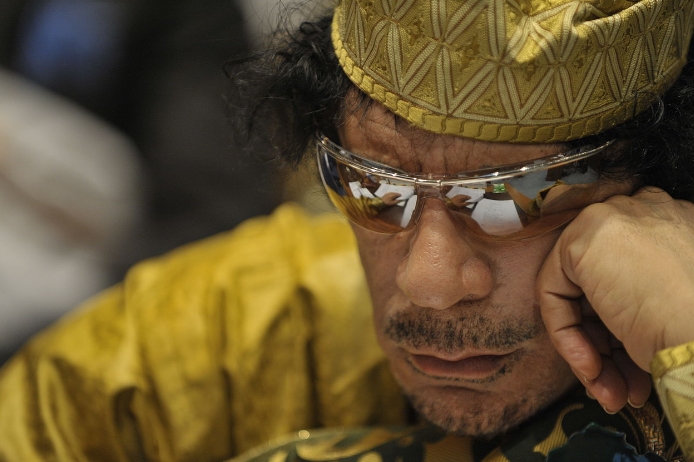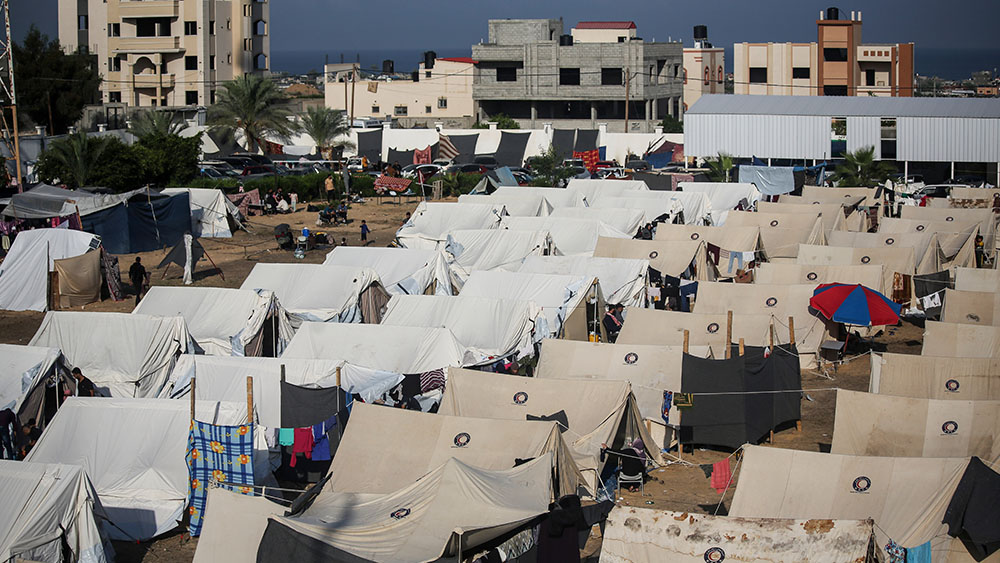
- Gaddafi’s 2011 warnings to Tony Blair and Silvio Berlusconi about post-intervention chaos have materialized, with Libya now a failed state and a major transit hub for African migrants.
- NATO’s regime-change operation, justified under the "Right to Protect" doctrine, was a calculated move to eliminate Gaddafi, dismantle Libyan sovereignty, and control its oil wealth.
- Libya under Gaddafi provided free education, healthcare, housing grants, and had no external debt — now, it’s a war-torn battleground of foreign-backed militias.
- The EU’s migration containment policies, including outsourcing border control to unstable African nations, mirror Gaddafi’s prediction that Europe would face demographic upheaval.
- Despite Western efforts to erase his legacy, Gaddafi remains deeply popular in Libya, with his son Saif al-Islam poised for a political comeback if free elections ever occur.
The migration crisis Europe created
Europe’s southern borders are buckling under the weight of a migration crisis decades in the making. The EU’s solution? Shift responsibility to African nations — many of which, like Libya, are destabilized by Western intervention. Today, over 4 million undocumented African migrants live in Libya, a country with an official population of just 7.5 million. Gaddafi foresaw this. In 2010, he bluntly told Italian PM Silvio Berlusconi: “Tomorrow Europe might no longer be European, and even black, as there are millions who want to come in.” His words were dismissed as hyperbole. Yet by 2024, non-EU citizens accounted for 27.3 million of Europe’s 448.8 million population — a figure set to grow as conflict drives more Africans northward.NATO’s real mission: Erasing Gaddafi’s legacy
The 2011 NATO intervention, framed as a humanitarian mission, was a thinly veiled regime-change operation. UN Resolution 1973, pushed by the U.S., UK, and France, authorized military action under the "Right to Protect" doctrine — yet no independent investigation verified the alleged atrocities used to justify it. Instead, Western media and politicians like UK Foreign Secretary William Hague spread disinformation, including false claims that Gaddafi had fled to Venezuela. The truth? Libya’s "rebels" were a mix of Islamist extremists — including Al-Qaeda affiliates — armed and funded by NATO and Gulf states. The bombing campaign, dubbed Operation Unified Protector, killed countless civilians and reduced Libya’s infrastructure to rubble. Gaddafi’s gruesome murder by NATO-backed militias in October 2011 was the final act in a plot to eliminate an independent African leader who dared to challenge Western hegemony.Libya before and after: A nation dismantled
Pre-2011 Libya was a model of self-sufficiency. Under Gaddafi:- Education and healthcare were free.
- Newlyweds received $50,000 to buy homes.
- The Great Man-Made River Project provided water security.
- The country had no external debt and Africa’s highest per-capita income.
Reduced Russian drone strike sets the stage for Istanbul’s critical peace talks
By Willow Tohi // Share
DOJ targets controversial “Proximal Origin” study in push for scientific transparency
By Willow Tohi // Share
Israel’s U.S.-backed Gaza aid plan sparks global backlash
By Belle Carter // Share
LAB-MUTATED PORK: The CRISPR pigs are gene-edited and heading to your dinner plate
By S.D. Wells // Share
The truth about Benzyl Alcohol in beauty products
By Zoey Sky // Share
Texas measles outbreak used as political psyop to pressure RFK Jr., whistleblower claims
By Finn Heartley // Share
Trump urges House Speaker Johnson to raise taxes on wealthiest Americans
By lauraharris // Share
Trump taps Fox News' Judge Jeanine Pirro as interim U.S. attorney for D.C.
By lauraharris // Share
Iran offers temporary uranium enrichment limits as U.S. imposes new sanctions
By isabelle // Share
Reduced Russian drone strike sets the stage for Istanbul’s critical peace talks
By willowt // Share
Breakthrough study links mRNA vaccines to irreversible female fertility loss
By willowt // Share










